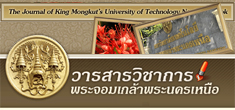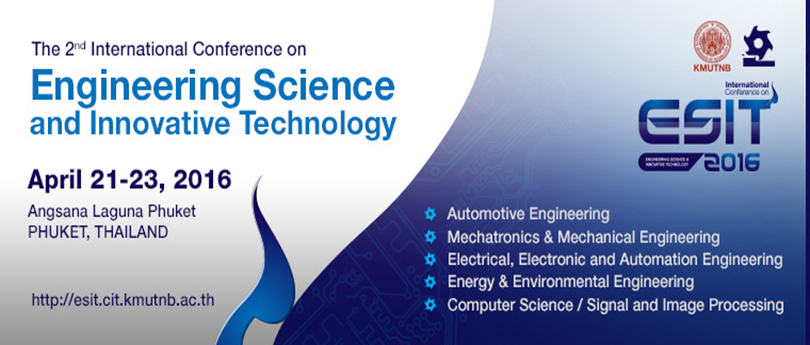Abstract
The research developed concrete block having property for saving energy. The no-fine concrete is used to produce porous concrete block which lighter weight than typical concrete block, and have lower thermal conductivity resulted in heat transfer reduction from outside into the building. The porous concrete block has similar cost with typical concrete block so the person who has low revenue can use to build their house. In this study, the water to cement ratio is used in the range between 0.25 to 0.45 and the total weight of mixture to cement ratio in the range between 6.0 and 12.0. Crushed limestone with single size of 3/8” (10 mm.) is used as coarse aggregate. By considering the compressive strength, unit weight and production cost, the optimum proportion to produce porous concrete block is 1 : 9.33 by weight (cement : aggregate) or 1 : 11 by volume and water to cement ratio is 0.367. The compressive strength at day 28of curing of porous concrete block is 52.22 kg/cm2 and unit weight is 1,629 kg/m3. The porous concrete block have lower unit weight and thermal conductivity than typical concrete block about 20% and 45%, respectively. The production cost without wage is about 2.12 baht per unit which is similar to the typical concrete block. Thus, it suggested that the porous concrete block can conserved energy by reduced weight of structure and heat transfer to the building.
The research developed concrete block having property for saving energy. The no-fine concrete is used to produce porous concrete block which lighter weight than typical concrete block, and have lower thermal conductivity resulted in heat transfer reduction from outside into the building. The porous concrete block has similar cost with typical concrete block so the person who has low revenue can use to build their house. In this study, the water to cement ratio is used in the range between 0.25 to 0.45 and the total weight of mixture to cement ratio in the range between 6.0 and 12.0. Crushed limestone with single size of 3/8” (10 mm.) is used as coarse aggregate. By considering the compressive strength, unit weight and production cost, the optimum proportion to produce porous concrete block is 1 : 9.33 by weight (cement : aggregate) or 1 : 11 by volume and water to cement ratio is 0.367. The compressive strength at day 28of curing of porous concrete block is 52.22 kg/cm2 and unit weight is 1,629 kg/m3. The porous concrete block have lower unit weight and thermal conductivity than typical concrete block about 20% and 45%, respectively. The production cost without wage is about 2.12 baht per unit which is similar to the typical concrete block. Thus, it suggested that the porous concrete block can conserved energy by reduced weight of structure and heat transfer to the building.
Keywords : Concrete block, Porous concrete, No-fine concrete, Thermal conductivity




